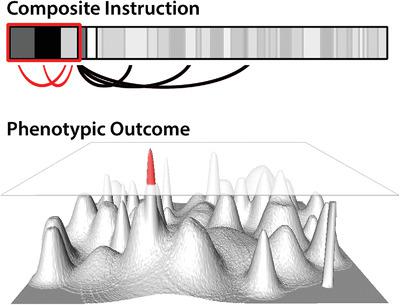Our official English website, www.x-mol.net, welcomes your
feedback! (Note: you will need to create a separate account there.)
Brain wiring with composite instructions
BioEssays ( IF 3.2 ) Pub Date : 2020-11-04 , DOI: 10.1002/bies.202000166 P Robin Hiesinger 1
BioEssays ( IF 3.2 ) Pub Date : 2020-11-04 , DOI: 10.1002/bies.202000166 P Robin Hiesinger 1
Affiliation

|
The quest for molecular mechanisms that guide axons or specify synaptic contacts has largely focused on molecules that intuitively relate to the idea of an “instruction.” By contrast, “permissive” factors are traditionally considered background machinery without contribution to the information content of a molecularly executed instruction. In this essay, I recast this dichotomy as a continuum from permissive to instructive actions of single factors that provide relative contributions to a necessarily collaborative effort. Individual molecules or other factors do not constitute absolute instructions by themselves; they provide necessary context for each other, thereby creating a composite that defines the overall instruction. The idea of composite instructions leads to two main conclusions: first, a composite of many seemingly permissive factors can define a specific instruction even in the absence of a single dominant contributor; second, individual factors are not necessarily related intuitively to the overall instruction or phenotypic outcome.
中文翻译:

脑连线复合指令
对引导轴突或指定突触接触的分子机制的探索主要集中在与“指令”概念直观相关的分子上。相比之下,“许可”因素传统上被认为是对分子执行指令的信息内容没有贡献的背景机制。在这篇文章中,我将这种二分法重新定义为从单一因素的宽容行动到指导行动的连续统一体,这些行动为必然的协作努力提供了相对贡献。个别分子或其他因素本身不构成绝对指令;它们为彼此提供了必要的上下文,从而创建了一个定义整体指令的组合。复合指令的思想导致两个主要结论:第一,即使在没有单一的主要贡献者的情况下,许多看似允许的因素的组合也可以定义特定的指令;其次,个体因素不一定与整体指导或表型结果直观相关。
更新日期:2020-12-22
中文翻译:

脑连线复合指令
对引导轴突或指定突触接触的分子机制的探索主要集中在与“指令”概念直观相关的分子上。相比之下,“许可”因素传统上被认为是对分子执行指令的信息内容没有贡献的背景机制。在这篇文章中,我将这种二分法重新定义为从单一因素的宽容行动到指导行动的连续统一体,这些行动为必然的协作努力提供了相对贡献。个别分子或其他因素本身不构成绝对指令;它们为彼此提供了必要的上下文,从而创建了一个定义整体指令的组合。复合指令的思想导致两个主要结论:第一,即使在没有单一的主要贡献者的情况下,许多看似允许的因素的组合也可以定义特定的指令;其次,个体因素不一定与整体指导或表型结果直观相关。











































 京公网安备 11010802027423号
京公网安备 11010802027423号